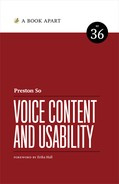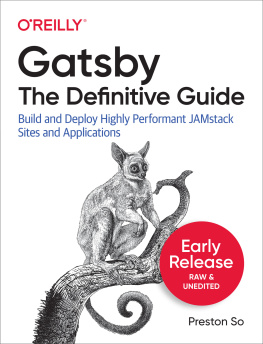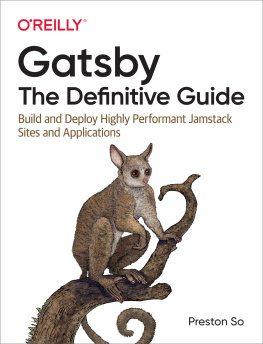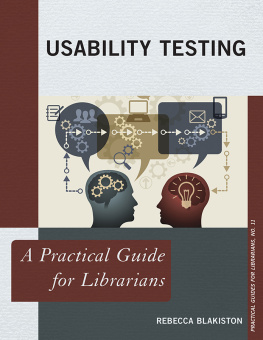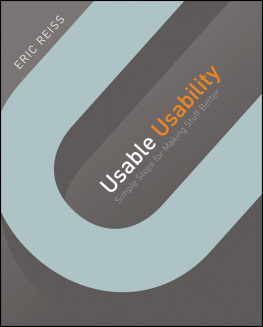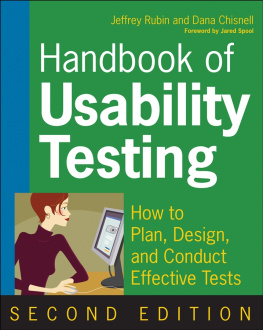Preston So - Voice Content and Usability
Here you can read online Preston So - Voice Content and Usability full text of the book (entire story) in english for free. Download pdf and epub, get meaning, cover and reviews about this ebook. year: 2021, publisher: A Book Apart, genre: Home and family. Description of the work, (preface) as well as reviews are available. Best literature library LitArk.com created for fans of good reading and offers a wide selection of genres:
Romance novel
Science fiction
Adventure
Detective
Science
History
Home and family
Prose
Art
Politics
Computer
Non-fiction
Religion
Business
Children
Humor
Choose a favorite category and find really read worthwhile books. Enjoy immersion in the world of imagination, feel the emotions of the characters or learn something new for yourself, make an fascinating discovery.
- Book:Voice Content and Usability
- Author:
- Publisher:A Book Apart
- Genre:
- Year:2021
- Rating:5 / 5
- Favourites:Add to favourites
- Your mark:
- 100
- 1
- 2
- 3
- 4
- 5
Voice Content and Usability: summary, description and annotation
We offer to read an annotation, description, summary or preface (depends on what the author of the book "Voice Content and Usability" wrote himself). If you haven't found the necessary information about the book — write in the comments, we will try to find it.
Preston So: author's other books
Who wrote Voice Content and Usability? Find out the surname, the name of the author of the book and a list of all author's works by series.
Voice Content and Usability — read online for free the complete book (whole text) full work
Below is the text of the book, divided by pages. System saving the place of the last page read, allows you to conveniently read the book "Voice Content and Usability" online for free, without having to search again every time where you left off. Put a bookmark, and you can go to the page where you finished reading at any time.
Font size:
Interval:
Bookmark:
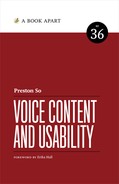

Better Onboarding
Krystal Higginis
Sustainable Web Design
Tom Greenwood
Design for Cognitive Bias
David Dylan Thomas
Cross-Cultural Design
Senongo Akpem
Expressive Design Systems
Yesenia Perez-Cruz
Resilient Management
Lara Hogan
Everyday Information Architecture
Lisa Maria Marquis
Progressive Web Apps
Jason Grigsby
Flexible Typesetting
Tim Brown
Going Offline
Jeremy Keith
Visit abookapart.com for our full list of titles.
Copyright 2021 Preston So
All rights reserved
Publisher: Jeffrey Zeldman
Designer: Jason Santa Maria
Executive director: Katel LeD
Managing editor: Lisa Maria Marquis
Editors: Sally Kerrigan, Caren Litherland
Technical editor: Mat Marquis
Book producer: Ron Bilodeau
ISBN: 978-1-952616-02-0
A Book Apart
New York, New York
http://abookapart.com
For my father, with love.
For everything we think comes naturally to us, we forget that someone, at some point, had to teach us how to do it. Acquiring natural language, for instance, requires years of frequent exposure, direction, correction, and interaction with other language-using humans. And any interfacewhether just between humans, or between humans and machinesis only intuitive to the extent it resembles whatever an individual has learned how to u se before.
Despite the hype, voice interactions with digital systems are not automatically easier to use than written websites. Only large investments of human effort come close to making it so. Creating good conversational content is wildly different from having a conversation. And as hard as it was for each of us to learn to speak, teaching a machine to do so is so much harder. You cant simply set a laptop down in front of Friends and hope it picks up the gist.
We need to deconstruct what weve forgotten someone taught us, reassemble sense from scratch (in all necessary permutations), and add human warmth and timbre without succumbing to our own comfortable biases about what sounding natu ral means.
No problem.
Fortunately, Preston So is here for you, drawing on his love of language as well as his direct experience with technology and content, to examine the emerging field of voice interaction and create a practical, principled guide to the task at hand. He provides clear steps to make voice content a possibility within any organization, because the process is going to be different for everyone. Soon, youll be on your way to creating systems that are more accessible, inclusive, and intuitive for your audiences.
Teaching a computer to sound human is hard. Writing about it is harder. Preston has done both. Listen to him if you want to improve upon th e silence.
ErikaHall
What do you picture in your mind when you think of the word content? Or rather, what do you hear? Today, much of our content lives inside websites, splayed like wallpaper across browser viewports and smartphon e screens.
But chances are that over the past year, youve interacted with at least a few, perhaps even dozens, of voice interfaces: experiences that serve users through aural and oral means rather than through written or print ed media.
These days, voice interfaces are everywhere. We enlist our voices to schedule events on a calendar, plan a get-together, transfer funds between accounts, or order takeout for dinner. Voice interfaces add greater nuance and richness to our interactions with websites, phones, tablets, search engines, smart speakers, smart home systems, and Internet of Things (IoT) devices. Their use cases run the gamut, from manipulating switchboards for corporate phone hotlines to navigating websites with screen readers to teaching schoolchildren to read phonetically to staving off loneliness for elders and empt y nesters.
Though theyre rapidly becoming integral to our routines, todays voice interfaces are mostly limited to executing tasks and performing transactions on our behalf. But there are lots of other things we could do with voice interfaces for which we mostly still resort to the web. Demand is poised to intensify for designers, content strategists, and information architects to deliver voice contentrichly structured information transmitted through the medium of voiceespecially as the adoption of voice interfaces ac celerates.
When it comes to delivering contentcompelling copy, intriguing information, or just a dose of breaking newsvoice interfaces still fall woefully behind. Outside of simple requests, users who want to use their voices instead of their screens to browse idly through a newspapers articles, embark on a virtual audio tour of a museums exhibits, or review a small businesss product details are largely out of luck.
Voice content also remains mostly uncharted territory. As humans, interacting with one another by voice comes naturally to us, because speech is among our most primeval habits. By working with us on our own verbal terms, its the machines that have to do what doesnt come naturally to them, along with parsing all the weirdness that characterizes hum an speech.
The growing interest in voice experiences and particularly in voice content puts in stark relief the other challenges surrounding the ongoing trend I call the channel explosion. Today, voice is just one specimen in a menagerie of new conduits for content (like augmented reality, digital signage, and IoT devices) that overturn our browser-friendly biases. For content practitioners and designers, our longstanding focus on the websites and applications we ownall largely visual and bound to devices with screenswill need to adapt to embrace other means of accessin g content.
Working with voice content means handling content beyond the browser, a rapidly emerging reality for teams besieged by growing stakeholder demands. To be successful, we need to prepare our content for every conceivable channel under the sun while simultaneously investing the necessary time to make sure each individual experiencevoice being just one of themis the best it can po ssibly be.
Voice content is possibly the most removed from the content approaches weve long been accustomed to on the web. It means new workflows and new tools to navigate the journey from web content to voice content. Instead of long-form written content, we need succinct spoken content. Instead of visual design, we need verbal dialogues. And instead of visually rooted navbars, we need aurally roo ted flows.
Voice content also scrambles all the neatly defined roles and responsibilities we used to treat as gospel. Because of its deeply interdisciplinary nature, everyone on the content or product teambe they designer, developer, copywriter, usability researcher, or accessibility specialistneeds to be involved in every step of a voice content implem entation.
Font size:
Interval:
Bookmark:
Similar books «Voice Content and Usability»
Look at similar books to Voice Content and Usability. We have selected literature similar in name and meaning in the hope of providing readers with more options to find new, interesting, not yet read works.
Discussion, reviews of the book Voice Content and Usability and just readers' own opinions. Leave your comments, write what you think about the work, its meaning or the main characters. Specify what exactly you liked and what you didn't like, and why you think so.

